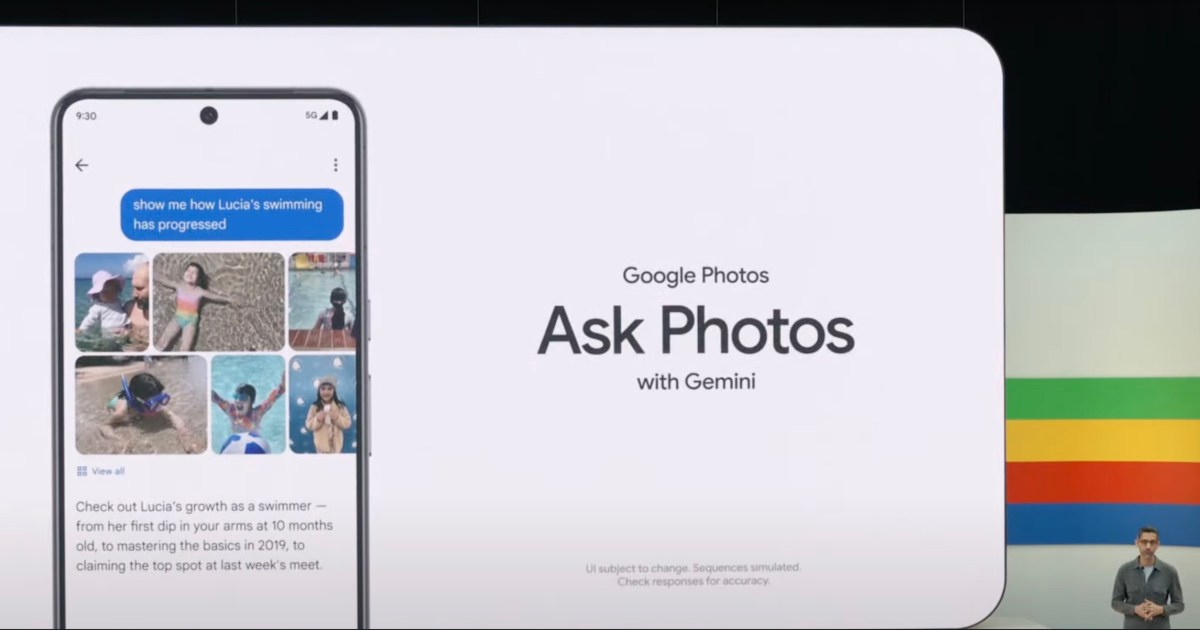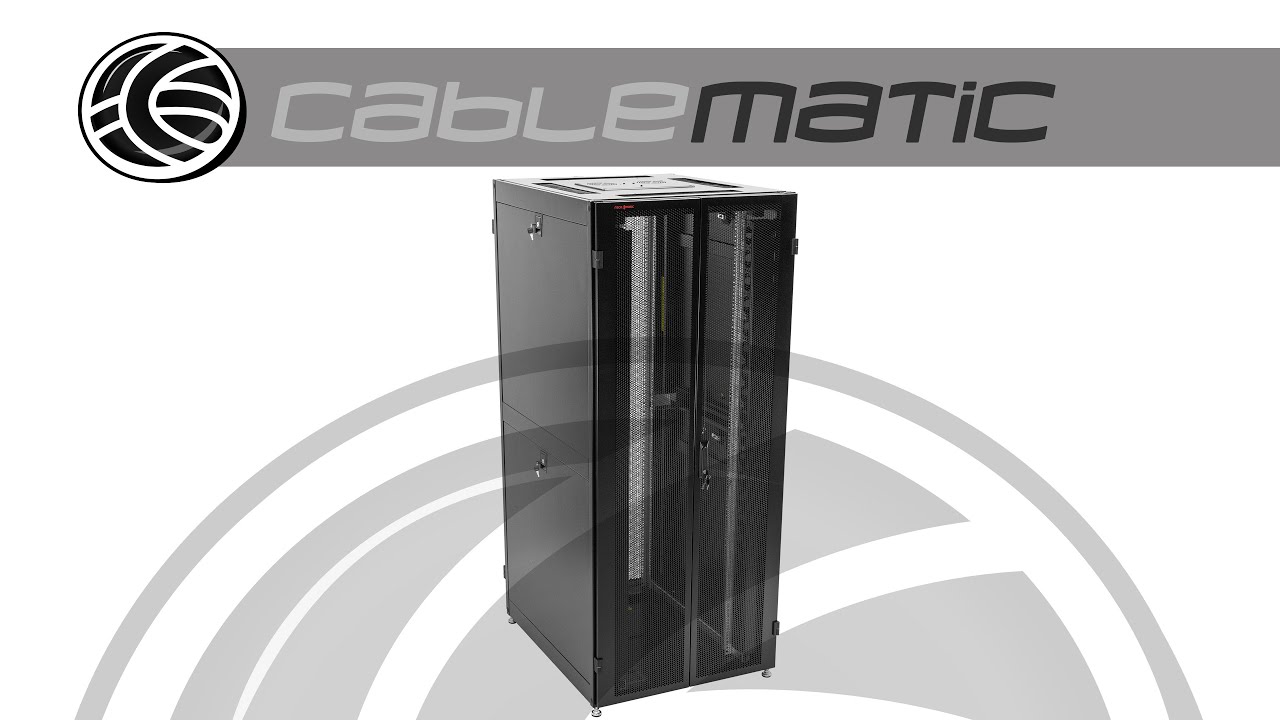Technology
AI costs more than you think, and we’re all paying for it

Today, we have a plethora of free AI tools at our fingertips like ChatGPT and Google Gemini. While using them doesn’t cost you money directly, anyone who paid attention in high school economics class would know that there’s no such thing as a free service. AI is an incredibly expensive technology, and its costs manifest themselves in several ways. What’s the true cost of AI technology?
This is a bit of a tough question to answer because we’re not just talking about the money that end users pay. The costs of AI affect millions, if not billions, of people across several industries, and we’re just starting to see some of the effects of this. What makes things worse is that the costs are increasing. They’re increasing at possibly the worst time with everything else happening in the world.
The true cost of AI affects to users
Let’s start with how much you’re paying out of pocket. At this point, things seem pretty clear when it comes to what AI features you pay for. Companies let you use their most basic AI features for free, and if you want some more advanced features, you’ll just pay a monthly fee. This is how companies like OpenAI, Google, Perplexity, and others operate.
There’s also the AI that comes pre-installed on devices like Samsung’s Galaxy AI and Apple Intelligence. These tools are also free to use with the only cost being the cost of buying the device for the most part.
But here’s a question, you don’t expect things to be like this forever, do you? The sad fact is that this is going to change, and the companies know this. They knew this from the get-go. Free features are going to go behind paywalls and the cost of hopping those paywalls is going to rise as time goes on. We haven’t seen it just yet, but companies are getting ready to start making changes.
Price increases
For example, OpenAI plans to raise the price of ChatGPT Plus from $20/month to $22/month by the end of the year, and it plans to raise it to $44/month within the next five years. The company is aware that the price that they’re charging right now is not sustainable. This isn’t just specific to OpenAI; pretty much all companies developing AI tools know that the prices they’re charging aren’t going to keep their boats afloat for long. These are introductory prices we’re paying now.
Temporarily free
When it comes to free platforms, we’re going to start seeing the number of free features diminishing as time goes on. Right now, Google is letting people try out a ton of free features. We’re talking about some rather advanced features like AI Overviews, Audio Overviews in NotebookLM, Gemini in Gmail, and others. It’s not out of the kindness of the company’s heart.
Google is letting free users try the features so that they can test them out while Google works out the kinks. The company is going to lock some of these features behind a paywall after the testing is done.
Those of you with Galaxy AI and Apple Intelligence, you’re not safe either. We heard soon after Samsung introduced Galaxy AI, that the company was considering charging to use it by the end of 2025. We’re not sure how much money Samsung is going to charge and we don’t know what features will be pay-walled. The fact is that some or most of the features that people are enjoying today could cost money after next year.
Apple is even considering charging people up to $20/month to use some of its AI features eventually. When Apple Intelligence finally launches to the masses, users will be able to use them for free, but not forever.
And people don’t know
The really messed-up thing about this is that many of the users have no idea that the companies are even considering charging them for these features. You’d have to be deeply planted in the tech news circuit to catch wind of what these companies are doing. The majority of people using AI have no idea that the features they’re using for free could cost money tomorrow.
The cost to companies
It’s true that AI can cost the user. While rising prices and temporarily free features will cost you money in the long run, the companies developing AI tools are paying a massive bill today. One thing that people don’t know is that the companies training AI models and deploying AI features are doing so at a loss; a MASSIVE loss. It costs tens of millions of dollars to train and maintain these AI models, and that cost trickles down to the users. This is why the free features you’re using won’t be free forever. Using them costs the companies more money than you’d think.
According to a paper by Epoch AI, it cost Google an estimated $29 million+ to train Gemini 1.0 Ultra, and that was just for the hardware and energy. The report estimates that the company spent more than $191 million in cloud compute resources training the model, and this was just at the time of publishing. It doesn’t take into account the continued training and maintenance of the model.
The same report states that OpenAI spent more than $40 million in hardware and energy and $78 million in cloud compute resources training GPT-4. Again, this is just at the time that the model was published. These aren’t even the companies’ most powerful models.
Breakdown of costs
Nearly half the cost of training Gemini 1.0 Ultra was on R&D staff (49%). 23% was on accelerator chips, 9% was on cluster-level interconnects, 4% was on energy, and 15% was on other server components. OpenAI spent far less on R&D (29%) and far more on accelerator chips (32%). It spent 12% on cluster-level interconnects, 6% on energy, and 21% on other server components.

Since these models came out, we’ve gotten models like GPT-4o and Gemini 1.5 Ultra. We can only imagine how much more these models cost to train.
Another thing to mention is that these costs only apply to training the models. What we also have to consider are the cost of paying the developers, continued upkeep of the models, etc.
Profit? What profit?
You might be thinking “How could they be losing money if they charge subscription fees?” The answer is that the money they’re getting from subscriptions is just dampening the financial burden of training their models. It’s like how Disney rakes in millions and millions of dollars from Disney+, but that service hasn’t made a cent of profit. The cost outweighs the income.
For example, at the time of writing this, OpenAI is now looking for another round of funding to help it reduce the sting of its costs. The company predicts that it will make about $3.7 billion by the end of 2024 in revenue. That’s not too shabby, but that’s outweighed by the $5 billion in business costs. We discovered this during the announcement that the company is raising the price of ChatGPT Plus over the next five years.
This is pretty scary because OpenAI is arguably the most popular AI company. More people pay for its AI tools than other companies, and they’re charging a comparable amount each month for their subscription services. So, it’s likely that OpenAI is making the most money purely from AI, and it’s not turning a profit.
So, other major brands like Google, Amazon, Microsoft, xAI, and Meta, are most likely paying much more and earning much less from their AI.
The prices are going to rise
Just like everything else, big brands made AI a massive profit-driven rat race. This means that they’re all fighting to outdo the competition. As such, these companies are increasing their efforts to build the best AI models, and this means that the costs are going to go up. The more powerful these models get, the more money it’s going to cost to maintain them, and the more money they’ll charge their users.
This is a trend that won’t stop because each company HAS to be the best on the market. No company wants to fall behind the competition; it will piss off the investors and make its users migrate to other services.
According to Epoch AI, the cost of training AI models has more than doubled each year since 2016. Back in 2016, the average cost of training a model was north of $5k of hardware and energy costs (10k for cloud compute resources). By the beginning of 2024, the average sat at about $9 million for hardware and energy (around $2 million for cloud compute resources).
The costs are going to continue to grow as companies try to finally craft AGI (artificial general intelligence). As the prices grow for the companies, they’re going to grow for the smaller brands and services utilizing these models. Not every AI service has its own model. Many of them license pre-existing models from these companies to generate their own content. Over time, it’s going to get more expensive to use these models, and those costs will trickle down to the consumers using their products.
The data cost
The true cost of AI doesn’t only involve money. These AI models probably wouldn’t function without a ton of data collected from years of internet and real-world content. Models need content to “learn” from the world, but the issue is that much of that content was created by people, and it’s being collected without their consent or knowledge.
What introduced people to this fact was learning about DALL-E back in 2022. We found out that, in order to create the then-crude AI-generated images, OpenAI had to scrape millions of images from the internet, and this included images that artists and photographers uploaded. That was just the beginning. As time went on, reports started to surface that several companies had been scraping content from news websites and even from social media posts. This had been going on for years, and we were none the wiser.
It’s possible that most of the social media posts that you’ve been posting for the past couple of years have been scraped and used to train models without your knowing. This is news to sour your palette, especially if you’re a creator. Obviously, if you create content, you’re likely to share it on Twitter (X.com), Instagram, Facebook, Reddit, or other platforms. Well, none of these platforms come out and tell you “Wait! Before you press that ‘Publish’ button, we’re going to scrape your content to train our model!” So, tons of people have been dumbfounded to find out that much of their content was scraped.
It gets worse because the big businesses are making it worse
The only thing that makes this worse is that the companies stealing your data are making it legal. Rather than respecting the fact that users don’t want their data scraped, they put that they scrape your data in their terms of service. So, the fact that they tell you makes it technically legal. This information is buried deep within the terms and coated in a layer of literary perfume like “Some of your data may be used to help improve the experience… blah blah blah.” They just don’t want to outright say that they’re scraping your data.
Also, the opt-out buttons are buried in settings to the point where you have to literally look up guides on how to opt-out, and that’s only for regions where the law requires an opt-out option. If your region doesn’t have an arm-twisting law in place requiring companies to provide an opt-out option, you can bet that there won’t be one.
Some companies are sneaky like X.com. You can opt-out of having your data scraped, but it’s not available on the app…. for some reason. So, you’ll have to use your computer which is less convenient.
Another way that businesses are making this worse is that the companies whose products we use are cutting deals with AI companies to hand over your data. For example, Reddit made a deal to hand over all of its data to Google. In a flash, Reddit just became a content farm for Google, and the users are the animals. Also, LinkedIn scrapes data to most likely train Microsoft’s models. Companies are making deals with these AI companies to hand over their users’ data, and people don’t know about it.
More time, more data
Just like the monetary cost of AI, the data cost is going to grow as time goes on. The more powerful companies want their AI models to be, the more data they’re going to need. This means that companies are going to need to find more ways of getting data and content. This means that it’ll get increasingly harder to post anything to the internet that won’t be intercepted and used to train a model. More and more of your data will be stolen as time goes on.
Paying the price
We’re still at the very beginning of our AI age, and we’re going to be for a while. As such, we’re still rather ignorant about the potential consequences of our actions. How much will it cost to train a model in five years time? How much will it cost to use that model? Will there be any platform on the internet that doesn’t scoop up your data? These are all questions that we ask today, and we’re too frightened to know the answer.
If this trend continues, then not enough people are going to want to invest in AI technology either by direct investments, API access, or subscription services. We know that the price of our AI world is high, but the true cost might be higher than we think.
Servers computers
DELL TX846 $9 Price Reduction

DELL TX846 Poweredge 1950 Sas Cable $9 http://core4solutions.com/dell-tx846.html
Core 4 Solutions is a leading IT hardware procurement firm, located just outside Minneapolis, MN.
IBM – HP – Dell – Cisco – AdTran
Over 40,000+ refurbished items in stock across servers, networking, storage and parts. If we don’t have it in our inventory, we can source it for you – our network of suppliers allows us to offer the most aggressive pricing available with short lead times.
W also have strategic partnerships with the major hardware manufacturers meaning we can offer new factory sealed product at much below MSRP.
Check our website daily, we update our current inventory once a day a midnight.
Contact us :
Core 4 Solutions
7668 Executive Drive
Eden Prairie, MN 55344
1.855.CORE4
1.855.6734
info@core4solutions.com
www.core4solutions.com .
source
Technology
Google’s Ask Photo feature is available for users that joined a waitlist


Google has been on a roll lately with updates that make its platform dramatically more user-friendly than before, and one of the most impressive of these is the new Ask Photos feature in Google Photos. The feature has been hinted at for the better part of a year, but the official announcement came at the beginning of September when interested fans could sign up for a waitlist. According to the folks at 9to5Google, those early adopters might now have the feature available to them.
Ask Photos is a Gemini-powered tool that uses text prompts to search your photo library. If you’re like my wife and have 25,000 photos (or more) saved to the cloud, this feature makes it possible to find a specific image without scrolling for hours.
Perhaps the most exciting part of this update is that it isn’t limited to Google devices. Since the change applies to the Google Photos platform, it works on both Android and iOS. You’ll see it as a new tab in the Photos app that replaces the original Search tab. Don’t worry; the old-school search feature is still there, too, but you have to use Ask Photos now. Bear in mind that this feature isn’t available to everyone yet, but if you’ve signed up for the waitlist, it’s worth checking.
If Google already recognizes some of the people in the photos, it will ask you to define their relationship to you (you also have to do this for pets.) It also prompts you to review the terms and conditions regarding data privacy. At a glance, those permissions look pretty secure — Google says that responses aren’t reviewed by humans, never used for ads, and aren’t used to train generative AI models besides Photos.
- 1.
Ben Schoon | 9to5Google - 2.
Ben Schoon | 9to5Google - 3.
Ben Schoon | 9to5Google
9to5Google’s Ben Schoon says that his testing has been limited, but early impressions suggest the feature works a lot better at finding people and places rather than specific time periods. He says it returned irrelevant search results when asked about events from years ago, but more recent events show accurate results. His theory is that Google uses location data to narrow down results, but time will tell as the feature becomes more widely adopted.
This feature is exclusive to the United States for the moment. If you can’t yet access it, you can sign up for the waitlist here.
Technology
Apple Intelligence to boost iPhone 16 series sales: Analysts

Apple announced its new iPhone 16 series smartphones last month. The devices have been on sale for a while now, but they come with one of their main selling points, AI. Apple Intelligence is coming this month, but not all of its promised features. Apple Intelligence is expected to boost sales of the new iPhones, however.
The fact that Apple Intelligence is not included from the get-go is very odd to see from Apple. The company usually bakes in everything from the get-go, we’re not used to seeing delayed features, especially ones as important as Apple Intelligence.
Well, truth be told, if you’re running a beta version of iOS 18 at the moment, you can use Apple Intelligence already. We are talking about a stable build, though, as that’s what the regular users are using.
The iPhone 16 production numbers have been cut, but Apple Intelligence is expected to boost sales
With that being said, Apple reportedly cut the production of iPhone 16 models by three million units. The sales are not as great as Apple hoped they would be, it would seem.
Well, analysts from JP Morgan seem to think that there is “more muted momentum” in early orders. That is especially true when it comes to the two ‘Pro’ iPhones. They predict that the lack of excitement is “likely due to the unavailability of AI capabilities”.
Apple has been aggressively using the term ‘Apple Intelligence’ to promote the iPhone 16 series, and those features are not yet available. It’s still using that term, and it’s also heavily marketed on the company’s official website too.
There’s another problem, Apple Intelligence will be available only in English, at least at first. So many users from abroad don’t really have the incentive to upgrade to the latest iPhones, even though Apple Intelligence is coming.
Apple Intelligence is not among the top 5 reasons for users to upgrade
What is interesting, however, is that JP Morgan analysts say that Apple Intelligence was the sixth reason for users to upgrade to the new models. It’s not even in the top 5. Overall speed of the phone and 5G are ranked above it, amongst several others.
In any case, analysts estimate that Apple will ship out 76 million iPhones in the fourth quarter of this year. That number is expected to reach 148 million units over the next four quarters.
Servers computers
Armario rack 19'' de pie 42U 800x1000x2000mm MobiRack HQ de RackMatic- distribuido por CABLEMATIC ®

Puede comprarlo en: https://cablematic.com/es/productos/categoria/rack-19-pie-mobirack-hq/
Armario Rack de 19″ de la marca RackMatic modelo MobiRack HQ. Rack 19″ de altura 42U y tamaño externo en mm de 800 (ancho) x 1000 (produndidad) x 2095 (alto). Racks de 19″ de alta calidad y acabados. Fabricados en acero de alta calidad de 1,2mm de grosor, pintado en color negro. Armarios rack con un sistema de montaje muy rápido y con muy poca tornillería. Prestaciones profesionales y aptos para el montaje de salas de servidores montados en rack 19″. .
source
Technology
Prime Day Lego deals discount Super Mario and Star Wars sets by up to 41 percent

With October Prime Day just a few days away, we’re starting to see more and more early deals pop up each day. While it might be too early for your liking to think about holiday shopping, you might want to after you check out the latest Prime Day Lego deals. A number of Lego sets from the Super Mario, Star Wars and Harry Potter lineups are already on sale for up to 41 percent off. There are even steeper savings on general Lego sets as well.
On the Star Wars side of things, this Spider Tank set is 36 percent off and down to only $32, which is the lowest it’s ever been. It includes 526 pieces that replicate the spider tank from season three of The Mandalorian, plus three minifigures: Din Djarin, Bo-Katan Kryze and Grogu. Once built, the spider tank has grabbing claws, flexible legs and a little cockpit in which one of the figures can sit. Also on sale is this Boarding The Tantive IV set in which you recreate the iconic scene from Star Wars: A New Hope. That will set you back $44, which represents a 20-percent discount.
In the Mario space, this Dixie Kong’s Jungle Jam expansion set has the biggest discount: 41 percent off and down to $16. It has 174 pieces along with buildable Dixie Kong and Squawks figures that both come with musical accessories. Mario fans who are old enough to have a work-from-home setup might appreciate this displayable Piranha Plant set that would look great in the background of any video conference call. It’s 20 percent off and down to $48.
Rounding things out with Harry Potter sets, this Hogwarts Castle and Grounds set is down to $136 and has never been cheaper. It includes 2,660 pieces that create a final product that’s over eight inches high, 13 inches wide and 10 inches deep. Plus, it comes with a cute, golden Hogwarts architect statue minifigure.
If you’re looking for more general Lego sets, two of the best deals we found are on the Classic Medium Creative Brick Box, down to $19, and the Lego City 2024 advent calendar, down to $26. The former includes 484 pieces in all different sizes and colors, and would make a great gift for anyone who just likes to build with Lego without following a set of instructions. As for the latter, you probably know someone who loves a good advent calendar this time of year, and this Lego one has 24 surprise gifts that include seasonal minifigures, mini builds and more.
Best Prime Day Lego deals
Follow @EngadgetDeals on Twitter for the latest tech deals and buying advice, and stay tuned to Engadget.com for all of the best tech deals coming out of October Prime Day 2024.
Servers computers
Tripp Lite 8U/12U/22U Expandable Wall-Mount 2-Post Open Frame Rack, Adjustable Network Equipment –

Tripp Lite 8U/12U/22U Expandable Wall-Mount 2-Post Open Frame Rack, Adjustable Network Equipment
Amazon Product Link: http://amazon.com/dp/B0041W55YE/?tag=thu68-20
Configures to 8U, 12U or 22U of rack space
Stores 19 in. rack equipment up to 18 inches deep
Maximum load capacity of 150 pounds
Allows easy access to equipment and cabling
Simple to assemble and mount
Tripp Lite’s SRWO8U22 Wall-Mount Open Frame Rack saves floor space and provides an economical margin for future growth. This expandable 2-post wall-mount open frame rack can be assembled in one of three configurations, meeting your current needs and leaving rack space in reserve for the future. With its heavy-duty steel frame, the SRWO8U22 can accommodate up to 150 pounds. of equipment in up to 22U of rack space—off the floor! The SRWO8U22 comes with all the necessary hardware to install the rack.
The SRWO8U22 features sturdy wall-mount brackets and a heavy-duty steel frame that allows the enclosure to be wall-mounted—an ideal rackmount solution for any venue where floor space is limited.
The SRWO8U22 is an ideal solution for secure IT environments and other applications not requiring a lockable enclosure. It conserves valuable floor space, helps IT managers to better organize their equipment array, and simplifies access for equipment installation and servicing.
Top reviews from the United States
Sturdy for basic use
I was worried about this rack being able to support the weight of a NAS, UPS, switch, and other equipment. I used heavy lag bolts directly into the studs as well as plywood backer with a few additional bolts ran through it and so far it seems to be holding up well. I specifically selected equipment that was not too heavy, going back and adjusting my requirements several times. What I like about this rack is that when doing my punchdowns and cabling there is enough room (even in a tiny space) to get behind and stand inside of it. I had a very narrow area to work in and feel that this rack is doing well in that space. I would recommend it for basic use in a home or small office, or anywhere with a confined area. Attached are a couple pictures.
source
-

 Womens Workouts2 weeks ago
Womens Workouts2 weeks ago3 Day Full Body Women’s Dumbbell Only Workout
-

 Science & Environment3 weeks ago
Science & Environment3 weeks agoHow to unsnarl a tangle of threads, according to physics
-

 Science & Environment2 weeks ago
Science & Environment2 weeks agoHyperelastic gel is one of the stretchiest materials known to science
-

 Technology3 weeks ago
Technology3 weeks agoWould-be reality TV contestants ‘not looking real’
-

 Science & Environment2 weeks ago
Science & Environment2 weeks ago‘Running of the bulls’ festival crowds move like charged particles
-

 Science & Environment3 weeks ago
Science & Environment3 weeks agoMaxwell’s demon charges quantum batteries inside of a quantum computer
-

 News2 weeks ago
News2 weeks agoOur millionaire neighbour blocks us from using public footpath & screams at us in street.. it’s like living in a WARZONE – WordupNews
-

 Science & Environment3 weeks ago
Science & Environment3 weeks agoHow to wrap your mind around the real multiverse
-

 Science & Environment2 weeks ago
Science & Environment2 weeks agoSunlight-trapping device can generate temperatures over 1000°C
-

 Science & Environment3 weeks ago
Science & Environment3 weeks agoLiquid crystals could improve quantum communication devices
-

 Science & Environment2 weeks ago
Science & Environment2 weeks agoQuantum ‘supersolid’ matter stirred using magnets
-

 Science & Environment3 weeks ago
Science & Environment3 weeks agoITER: Is the world’s biggest fusion experiment dead after new delay to 2035?
-

 Science & Environment2 weeks ago
Science & Environment2 weeks agoPhysicists are grappling with their own reproducibility crisis
-

 Science & Environment2 weeks ago
Science & Environment2 weeks agoQuantum forces used to automatically assemble tiny device
-
News3 weeks ago
the pick of new debut fiction
-

 Science & Environment3 weeks ago
Science & Environment3 weeks agoWhy this is a golden age for life to thrive across the universe
-

 News3 weeks ago
News3 weeks agoYou’re a Hypocrite, And So Am I
-

 Sport2 weeks ago
Sport2 weeks agoJoshua vs Dubois: Chris Eubank Jr says ‘AJ’ could beat Tyson Fury and any other heavyweight in the world
-

 Science & Environment3 weeks ago
Science & Environment3 weeks agoCaroline Ellison aims to duck prison sentence for role in FTX collapse
-

 Science & Environment3 weeks ago
Science & Environment3 weeks agoTime travel sci-fi novel is a rip-roaringly good thought experiment
-

 Science & Environment3 weeks ago
Science & Environment3 weeks agoLaser helps turn an electron into a coil of mass and charge
-

 Science & Environment2 weeks ago
Science & Environment2 weeks agoNuclear fusion experiment overcomes two key operating hurdles
-

 Technology1 week ago
Technology1 week ago‘From a toaster to a server’: UK startup promises 5x ‘speed up without changing a line of code’ as it plans to take on Nvidia, AMD in the generative AI battlefield
-

 Football1 week ago
Football1 week agoFootball Focus: Martin Keown on Liverpool’s Alisson Becker
-

 Science & Environment3 weeks ago
Science & Environment3 weeks agoNerve fibres in the brain could generate quantum entanglement
-

 MMA1 week ago
MMA1 week agoConor McGregor challenges ‘woeful’ Belal Muhammad, tells Ilia Topuria it’s ‘on sight’
-
Business1 week ago
Eurosceptic Andrej Babiš eyes return to power in Czech Republic
-

 Science & Environment2 weeks ago
Science & Environment2 weeks agoRethinking space and time could let us do away with dark matter
-

 News3 weeks ago
News3 weeks ago▶️ Hamas in the West Bank: Rising Support and Deadly Attacks You Might Not Know About
-

 Science & Environment2 weeks ago
Science & Environment2 weeks agoFuture of fusion: How the UK’s JET reactor paved the way for ITER
-
Business1 week ago
Should London’s tax exiles head for Spain, Italy . . . or Wales?
-

 News2 weeks ago
News2 weeks agoIsrael strikes Lebanese targets as Hizbollah chief warns of ‘red lines’ crossed
-

 Science & Environment2 weeks ago
Science & Environment2 weeks agoA new kind of experiment at the Large Hadron Collider could unravel quantum reality
-

 News3 weeks ago
News3 weeks ago▶️ Media Bias: How They Spin Attack on Hezbollah and Ignore the Reality
-

 News3 weeks ago
News3 weeks agoNew investigation ordered into ‘doorstep murder’ of Alistair Wilson
-

 Science & Environment2 weeks ago
Science & Environment2 weeks agoUK spurns European invitation to join ITER nuclear fusion project
-

 CryptoCurrency2 weeks ago
CryptoCurrency2 weeks agoCardano founder to meet Argentina president Javier Milei
-

 Science & Environment2 weeks ago
Science & Environment2 weeks agoMeet the world's first female male model | 7.30
-

 Science & Environment2 weeks ago
Science & Environment2 weeks agoX-rays reveal half-billion-year-old insect ancestor
-

 Science & Environment3 weeks ago
Science & Environment3 weeks agoA slight curve helps rocks make the biggest splash
-
Business3 weeks ago
JPMorgan in talks to take over Apple credit card from Goldman Sachs
-

 CryptoCurrency2 weeks ago
CryptoCurrency2 weeks agoBitcoin bulls target $64K BTC price hurdle as US stocks eye new record
-

 Womens Workouts2 weeks ago
Womens Workouts2 weeks agoBest Exercises if You Want to Build a Great Physique
-

 News2 weeks ago
News2 weeks agoWhy Is Everyone Excited About These Smart Insoles?
-

 News2 weeks ago
News2 weeks agoFour dead & 18 injured in horror mass shooting with victims ‘caught in crossfire’ as cops hunt multiple gunmen
-

 Technology2 weeks ago
Technology2 weeks agoRobo-tuna reveals how foldable fins help the speedy fish manoeuvre
-

 CryptoCurrency2 weeks ago
CryptoCurrency2 weeks agoEthereum is a 'contrarian bet' into 2025, says Bitwise exec
-

 Health & fitness3 weeks ago
Health & fitness3 weeks agoThe secret to a six pack – and how to keep your washboard abs in 2022
-

 Science & Environment2 weeks ago
Science & Environment2 weeks agoQuantum time travel: The experiment to ‘send a particle into the past’
-

 Science & Environment2 weeks ago
Science & Environment2 weeks agoWhy we need to invoke philosophy to judge bizarre concepts in science
-

 CryptoCurrency2 weeks ago
CryptoCurrency2 weeks agoBitcoin miners steamrolled after electricity thefts, exchange ‘closure’ scam: Asia Express
-

 CryptoCurrency2 weeks ago
CryptoCurrency2 weeks agoDorsey’s ‘marketplace of algorithms’ could fix social media… so why hasn’t it?
-

 CryptoCurrency2 weeks ago
CryptoCurrency2 weeks agoDZ Bank partners with Boerse Stuttgart for crypto trading
-

 CryptoCurrency2 weeks ago
CryptoCurrency2 weeks agoLow users, sex predators kill Korean metaverses, 3AC sues Terra: Asia Express
-

 Womens Workouts2 weeks ago
Womens Workouts2 weeks agoEverything a Beginner Needs to Know About Squatting
-

 Womens Workouts2 weeks ago
Womens Workouts2 weeks ago3 Day Full Body Toning Workout for Women
-

 Travel2 weeks ago
Travel2 weeks agoDelta signs codeshare agreement with SAS
-

 Technology2 weeks ago
Technology2 weeks agoGet ready for Meta Connect
-

 Servers computers2 weeks ago
Servers computers2 weeks agoWhat are the benefits of Blade servers compared to rack servers?
-

 Politics2 weeks ago
Politics2 weeks agoHope, finally? Keir Starmer’s first conference in power – podcast | News
-

 Technology1 week ago
Technology1 week agoThe best robot vacuum cleaners of 2024
-

 Health & fitness1 week ago
Health & fitness1 week agoThe 7 lifestyle habits you can stop now for a slimmer face by next week
-

 Sport2 weeks ago
Sport2 weeks agoUFC Edmonton fight card revealed, including Brandon Moreno vs. Amir Albazi headliner
-

 Technology2 weeks ago
Technology2 weeks agoiPhone 15 Pro Max Camera Review: Depth and Reach
-

 News2 weeks ago
News2 weeks agoBrian Tyree Henry on voicing young Megatron, his love for villain roles
-

 Health & fitness3 weeks ago
Health & fitness3 weeks agoThe maps that could hold the secret to curing cancer
-

 Science & Environment2 weeks ago
Science & Environment2 weeks agoBeing in two places at once could make a quantum battery charge faster
-

 CryptoCurrency2 weeks ago
CryptoCurrency2 weeks agoRedStone integrates first oracle price feeds on TON blockchain
-

 CryptoCurrency2 weeks ago
CryptoCurrency2 weeks agoBlockdaemon mulls 2026 IPO: Report
-

 CryptoCurrency2 weeks ago
CryptoCurrency2 weeks agoCoinbase’s cbBTC surges to third-largest wrapped BTC token in just one week
-
Politics2 weeks ago
UK consumer confidence falls sharply amid fears of ‘painful’ budget | Economics
-

 Science & Environment2 weeks ago
Science & Environment2 weeks agoCNN TÜRK – 🔴 Canlı Yayın ᴴᴰ – Canlı TV izle
-

 News1 week ago
News1 week agoUS Newspapers Diluting Democratic Discourse with Political Bias
-

 Technology1 week ago
Technology1 week agoQuantum computers may work better when they ignore causality
-

 Science & Environment2 weeks ago
Science & Environment2 weeks agoHow one theory ties together everything we know about the universe
-

 CryptoCurrency2 weeks ago
CryptoCurrency2 weeks agoCrypto scammers orchestrate massive hack on X but barely made $8K
-

 Science & Environment2 weeks ago
Science & Environment2 weeks agoTiny magnet could help measure gravity on the quantum scale
-

 Science & Environment2 weeks ago
Science & Environment2 weeks agoA tale of two mysteries: ghostly neutrinos and the proton decay puzzle
-

 Science & Environment2 weeks ago
Science & Environment2 weeks agoHow do you recycle a nuclear fusion reactor? We’re about to find out
-

 CryptoCurrency2 weeks ago
CryptoCurrency2 weeks agoDecentraland X account hacked, phishing scam targets MANA airdrop
-

 CryptoCurrency2 weeks ago
CryptoCurrency2 weeks agoTelegram bot Banana Gun’s users drained of over $1.9M
-

 CryptoCurrency2 weeks ago
CryptoCurrency2 weeks agoVonMises bought 60 CryptoPunks in a month before the price spiked: NFT Collector
-

 CryptoCurrency2 weeks ago
CryptoCurrency2 weeks agoSEC asks court for four months to produce documents for Coinbase
-

 CryptoCurrency2 weeks ago
CryptoCurrency2 weeks ago‘Silly’ to shade Ethereum, the ‘Microsoft of blockchains’ — Bitwise exec
-

 CryptoCurrency2 weeks ago
CryptoCurrency2 weeks agoVitalik tells Ethereum L2s ‘Stage 1 or GTFO’ — Who makes the cut?
-

 CryptoCurrency2 weeks ago
CryptoCurrency2 weeks ago‘No matter how bad it gets, there’s a lot going on with NFTs’: 24 Hours of Art, NFT Creator
-
Business2 weeks ago
Thames Water seeks extension on debt terms to avoid renationalisation
-
Business2 weeks ago
How Labour donor’s largesse tarnished government’s squeaky clean image
-
Politics2 weeks ago
‘Appalling’ rows over Sue Gray must stop, senior ministers say | Sue Gray
-

 News2 weeks ago
News2 weeks agoBrian Tyree Henry on voicing young Megatron, his love for villain roles
-
News2 weeks ago
The Project Censored Newsletter – May 2024
-

 Womens Workouts2 weeks ago
Womens Workouts2 weeks agoHow Heat Affects Your Body During Exercise
-

 Womens Workouts2 weeks ago
Womens Workouts2 weeks agoKeep Your Goals on Track This Season
-

 Womens Workouts2 weeks ago
Womens Workouts2 weeks agoWhich Squat Load Position is Right For You?
-

 TV2 weeks ago
TV2 weeks agoCNN TÜRK – 🔴 Canlı Yayın ᴴᴰ – Canlı TV izle
-

 News2 weeks ago
News2 weeks agoChurch same-sex split affecting bishop appointments
-

 Politics3 weeks ago
Politics3 weeks agoTrump says he will meet with Indian Prime Minister Narendra Modi next week
-

 Technology2 weeks ago
Technology2 weeks agoFivetran targets data security by adding Hybrid Deployment
-

 Science & Environment2 weeks ago
Science & Environment2 weeks agoSingle atoms captured morphing into quantum waves in startling image
-

 Politics2 weeks ago
Politics2 weeks agoLabour MP urges UK government to nationalise Grangemouth refinery

You must be logged in to post a comment Login